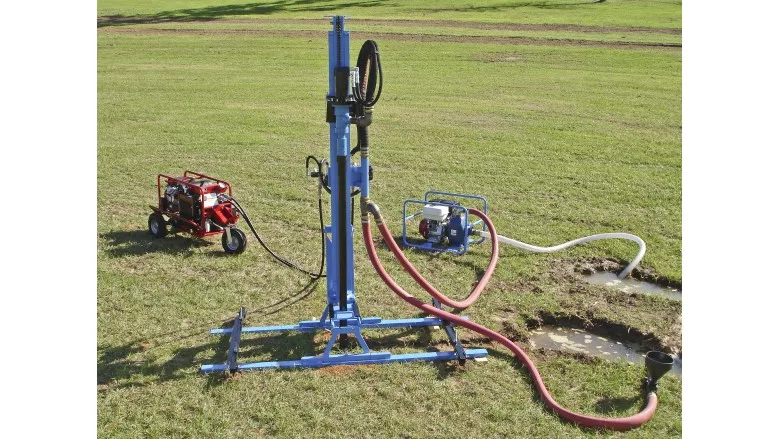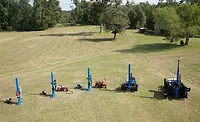Using Shallow Well Drills, Even for Confined Aquifers
Options for Nimble, but Capable, Drills for Shallow Water Wells

Small hydraulic drills can go through rugged rock formations to reach aquifers close to the surface, but with a much smaller footprint and project cost.
Source: Lone Star Drills
Successful water well drilling projects rely on finding the right drill for the aquifer. The location and type of aquifer influence the depth and features of the water well drill required.
First, here’s an overview of what an aquifer is.
What is an Aquifer?
An aquifer is an area of underground water that usually comes from snowmelt or rainwater. We have two types: unconfined and confined. Unconfined aquifers typically sit closer to the surface and, as the name implies, lack a confining layer of clay or silt. Confined aquifers, on the other hand, reside between layers of bedrock or harder rock formation.
Many projects, of course, require the stronger power and deeper drilling large drilling rigs provide. However, shallow well drills can reach many aquifers within 400 feet of the surface with a much smaller footprint, site impact and project cost. Here, I talk about different types of shallow well drills and offer tips for determining the best one for your project.
Shallow Well Drilling
Shallow well drills range from small, free-standing drills to larger trailer-mounted ones. Free-standing options offer more maneuverability and ease-of-use and are preferred for wells close to the surface.
For wells at shallow depths up to 200 feet, mechanical drills offer easy, reliable operation. These water well drills can bore through soft clay and sand. When drilling through asphalt, hard clay, frozen ground or rocky soil, hydraulic water well drills offer a better alternative. Some free-standing hydraulic drills can reach 300 feet and feature heavy-duty swivels and anchors for pushing through rugged rock formations.
Both mechanical and hydraulic shallow well drills provide easy maneuverability for shallow well drilling and offer viable options for reaching water close to the surface, where the aquifer sits above the bedrock layer.
Alternatively, some trailer-mounted hydraulic drills can drill up to 400 feet through a variety of soil and rock conditions. Trailer-mounted rigs can wield up to 9,000 pounds of pushdown force. Trailer-mounted hydraulic drills offer a better choice for breaking through bedrock to reach a shallow, confined aquifer.
Breaking through Bedrock
While a confined aquifer can’t be reached as easily as an unconfined aquifer, some trailer-mounted hydraulic water well drills offer the ability to power through bedrock with a little help from a down-the-hole (DTH) hammer. The DTH hammer breaks through tough rock formations, such as limestone, sandstone and quartzite, so the rig can continue drilling underneath that layer.
Trailer-mounted drills are more maneuverable than their larger counterparts because they don’t require a large truck for transport. Instead, operators move them using a small truck or ATV.
Work with Professionals
When planning a shallow well drilling project, speak with a drilling manufacturer to discuss the options and learn about which drill is best. Many well projects — even in confined aquifers — can succeed without bringing in big, multi-ton drills.
Looking for a reprint of this article?
From high-res PDFs to custom plaques, order your copy today!





